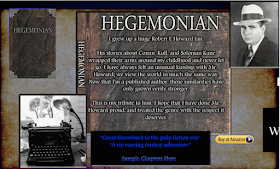At dusk came Adam Brand to him and spat upon his face.
"Ho neighbors all," spake Adam Brand, "see ye John Farrel's fate!
"Tis proven here a hempen noose is stronger than man's hate!
For heard ye not John Farrel's vow to be avenged upon me
Come life or death? See how he hangs high on the gallows tree!"
Yet never a word the people spoke, in fear and wild surprise-
For the grisly corpse raised up its head and stared with sightless eyes,
And with strange motions, slow and stiff, pointed at Adam Brand
And clambered down the gibbet tree, the noose within its hand.
With gaping mouth stood Adam Brand like a statue carved of stone,
Till the dead man laid a clammy hand hard on his shoulder bone.
And clambered down the gibbet tree, the noose within its hand.
With gaping mouth stood Adam Brand like a statue carved of stone,
Till the dead man laid a clammy hand hard on his shoulder bone.
Then Adam shrieked like a soul in hell; the red blood left his face
And he reeled away in a drunken run through the screaming market place;
And close behind, the dead man came with a face like a mummy's mask,
And the dead joints cracked and the stiff legs creaked with their unwonted task.
And he reeled away in a drunken run through the screaming market place;
And close behind, the dead man came with a face like a mummy's mask,
And the dead joints cracked and the stiff legs creaked with their unwonted task.
Men fled before the flying twain or shrank with bated breath,
And they saw on the face of Adam Brand the seal set there by death.
He reeled on buckling legs that failed, yet on and on he fled;
So through the shuddering market-place, the dying fled the dead.
And they saw on the face of Adam Brand the seal set there by death.
He reeled on buckling legs that failed, yet on and on he fled;
So through the shuddering market-place, the dying fled the dead.
At the riverside fell Adam Brand with a scream that rent the skies;
Across him fell John Farrel's corpse, nor ever the twain did rise.
There was no wound on Adam Brand but his brow was cold and damp,
For the fear of death had blown out his life as a witch blows out a lamp.
Across him fell John Farrel's corpse, nor ever the twain did rise.
There was no wound on Adam Brand but his brow was cold and damp,
For the fear of death had blown out his life as a witch blows out a lamp.
His lips were writhed in a horrid grin like a fiend's on Satan's coals,
And the men that looked on his face that day, his stare still haunts their souls.
Such was the fate of Adam Brand, a strange, unearthly fate;
For stronger than death or hempen noose are the fires of a dead man's hate.
And the men that looked on his face that day, his stare still haunts their souls.
Such was the fate of Adam Brand, a strange, unearthly fate;
For stronger than death or hempen noose are the fires of a dead man's hate.
[Happy Halloween All]














